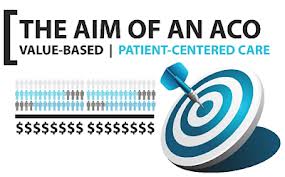October 1st marks the first ever public exchange open enrollment season. This means some of the speculation around consumer awareness and understanding, enrollment/uptake, premiums, and payer participation (not to mention the technical readiness of the exchanges) will finally subside and give way to a clearer picture of the PPACA’s initial success in mandating individual health coverage. October 1st marks the first ever public exchange open enrollment season. This means some of the speculation around consumer awareness and understanding, enrollment/uptake, premiums, and payer participation (not to mention the technical readiness of the exchanges) will finally subside and give way to a clearer picture of the PPACA’s initial success in mandating individual health coverage.
October 1st marks the first ever public exchange open enrollment season. This means some of the speculation around consumer awareness and understanding, enrollment/uptake, premiums, and payer participation (not to mention the technical readiness of the exchanges) will finally subside and give way to a clearer picture of the PPACA’s initial success in mandating individual health coverage. >
>
Despite this approaching level of clarity, however, several very significant “blind-spots” will continue to persist, principally for the health insurance carriers that choose to participate by offering PPACA compliant plans in the exchange. This is due to the law’s guaranteed issue mandate prohibiting health carriers from denying coverage based on preexisting conditions. As a result, the traditional enrollment process which consists of a comprehensive assessment of each applicant’s health status and risk cast against the backdrop of time-tested underwriting guidelines is completely thrown out.
What takes its place is an extremely limited data set (i.e., the member’s age, tobacco/smoking status, geographic region, and family size) from which carriers can determine pre-approved premiums and variability therein. To use an analogy, health insurance companies no longer have a “bouncer at the door” turning people away, or a sign reading No shirt, No shoes, No service at the entrance. In other words, everyone, regardless of their risk profile, must now be welcomed in with open arms and with very limited risk-adjusted rates.
This wouldn’t necessarily be a problem if the enrolling population comprised a well understood risk pool representing a true cross-section of the population. The reality, however, is that a predominantly unknown and potentially unhealthy population will flood the individual health insurance marketplace in a two weeks just as most states quickly phase out their high-risk pre-existing condition pools and shift them into the exchanges.
Additional blind-spots will result from the fact that millions of previously uninsured individuals that are expected to enter the exchange have very little in the way of historical claims data – making it virtually impossible to determine the health risk of a member until a preliminary view can be established 6-9 months into the future, once a meaningful period of claims data are generated.
This period of uncertainty, along with the fall-out created by an inability to medically investigate new members prior to enrollment, impacts the very means by which carriers price their products, measure/control risk, and manage the care of its members. In our view, the following are three of the top challenges faced by carriers participating in the state-based exchanges:
- Pricing / Rate Setting Deficiencies: With high levels of uncertainty regarding the health status of incoming enrollees, health carriers are confronted with an actuarial “blind-spot” as it relates to estimating the underlying cost structure of new members and setting rates for the upcoming 2014 open enrollment season. This problem persists through the 2015 open enrollment season as carriers will be required to submit their 2015 rates before claims generated from 2014 enrollees can inform and substantiate changes to the existing rates.
- Ineffective Risk Monitoring: In the absence of historical claims data and information typically picked up within the traditional individual health underwriting process, carriers are extremely disadvantaged in identifying, stratifying, and managing the risk of individual members as they enroll through the exchanges.
- Lack of Member-Specific Insight: Anotherissue stemming from the challenging risk assessment dynamics at play within the exchange environment is that carriers are unable to identify and address the medical needs of their members in a proactive and cost effective manner (e.g., care / chronic disease management program alignment, PCP assignment, alternative care scheduling, telemedicine interventions, wellness coaching, behavior modification / intervention, and other member outreach and education opportunities). In this way the goal of providing greater access to coverage has the unintended consequence of disadvantaging the individual as the carrier has a diminished ability to address their care needs in a meaningful way.
For these reasons, many national carriers, including Aetna, Cigna, and United Healthcare, have been very cautious in taking on the relatively unknown financial risk associated with the state-based exchanges – opting in favor of a “wait-and-see” approach until the trade-offs between member acquisition and financial viability come into clearer view.
As for the carriers participating in the exchanges, it will be critically important that a well-defined risk management program with strong consumer engagement underpinnings is put in place to embrace these newly insured individuals, better understand their individual health needs, and triage high risk members into appropriate care intervention programs. A sound strategy in this regard will ensure high levels of consumer satisfaction and retention while avoiding the significant claim losses related to members with expensive, unmanaged conditions. This will in turn increase the plan’s odds of long-term financial success coming off the inaugural open enrollment season.
Looking ahead, our team will continue to monitor how carriers are onboarding new members and look to see where innovation will occur not only in advertising and member acquisition, but in enrollment and upfront member engagement and onboarding. Given the rapid growth in the individual market, we suspect most carriers will be strained in this regard since these B2C markets have not been historical strengths and most carriers are still working their way up the consumer engagement “learning curve.” The carriers that will be successful in the public exchange setting – both from a risk management and customer satisfaction / experience standpoint – will have to be successful beyond the enrollment package and find novel ways to engage, monitor, and manage members on an ongoing basis. While the exchanges are designed to improve competition and foster improved consumer decision making among similar benefits packages, an unfortunate reality is that not all carriers will be successful. In these instances it will not only be the health plan that takes the hit, but the individual member as well.
image: health insurance/shutterstock








